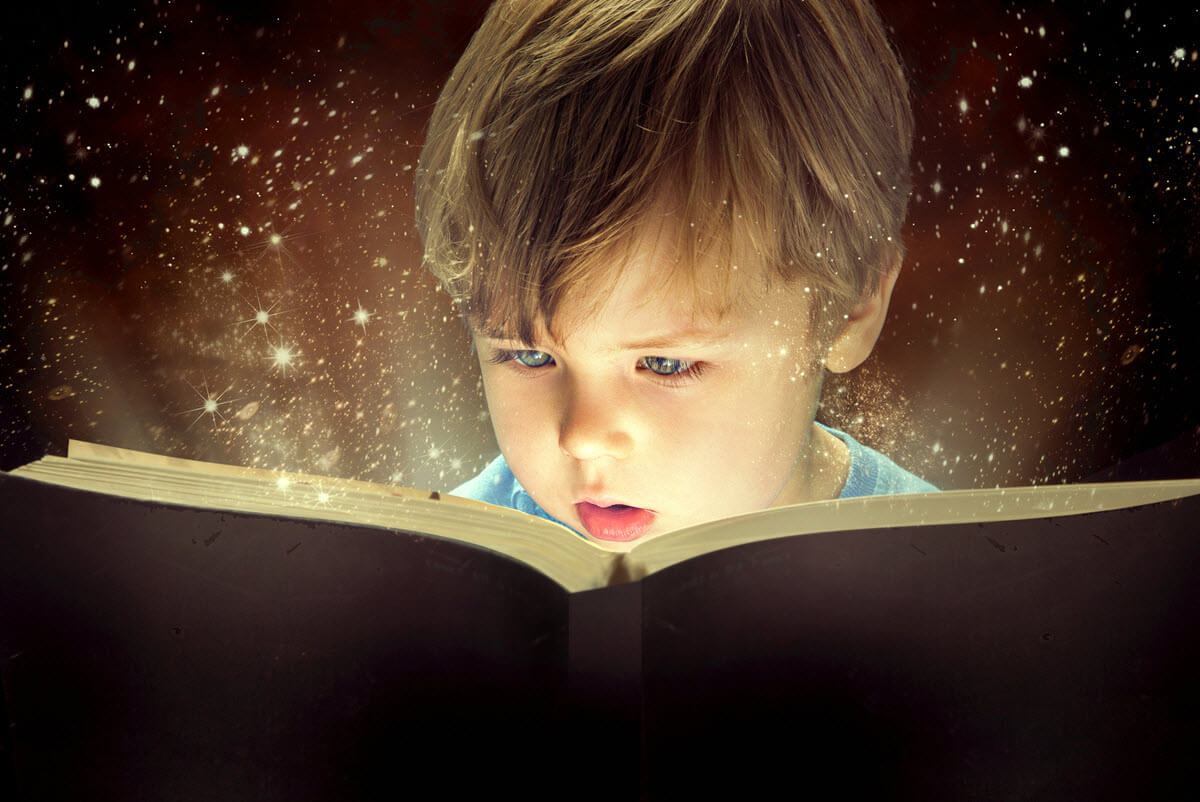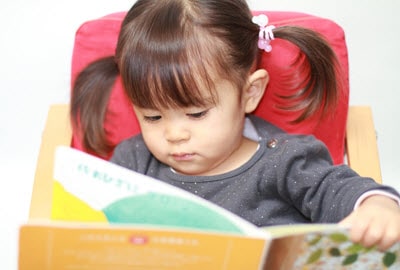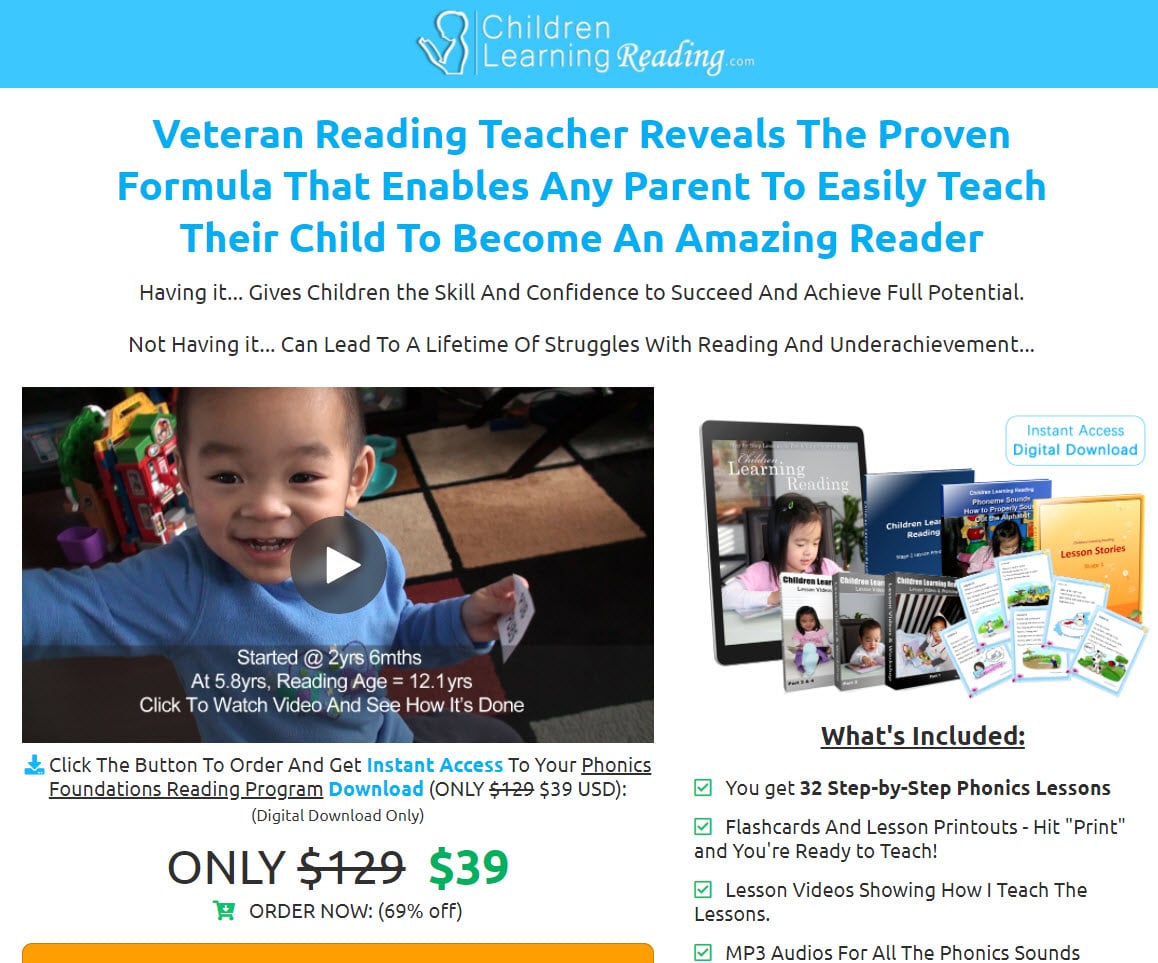What’s the Average Age to Start Reading?
As parents, we worry about the average age to start reading.
We’re anxious our kids will be behind in their reading development when it comes time for school.
Should our children start reading lessons as early as possible?
This post has the answers.
Keep reading to find out the typical age kids start reading and what you can do to give your little one the best chance of reading success.
Let’s begin.

Best Rated
See the Best Rated Reading Program
Take Quiz
Discover the ideal reading program for you & your child
Read this article
Continue reading the article
How long does it take a child to learn to read?
Parents must remember that even though the average child will learn to read between 6 and 7, all children learn at their own pace.
The key to reading success is making it an enjoyable process.
There are various ways to help make reading fun, such as letting children choose their own books, reading aloud to them, and taking them to the library. Additionally, be sure to praise your child for any progress they make!
On the other hand, don’t push your kids to read if they’re not interested. Let them enjoy the learning process, and they will get there in their own time.
What is the average age to begin reading?
Most kids begin showing an interest in reading when they’re around 4 years old.
However, every child is different; some may start earlier or later. It’s important to encourage your child to enjoy reading from a young age, as this will help them develop a love of reading.
At what age should a child read fluently?
Every child develops at their own pace.
However, some general guidelines can help determine if your child reads fluently.
Generally, children should be able to read fluently by the time they reach third grade. This means they can read age-appropriate texts quickly and accurately, with minimal errors.
They should also understand what they are reading and make connections between different pieces of text.
If your child is not reading fluently by third grade, it doesn’t mean they never will.
However, it may indicate a learning disability or other issue that could benefit from intervention. If you are concerned about your child’s reading ability, speak to their teacher or a qualified educational therapist for guidance.
What is the fastest way to teach a child to read?
The fastest way to teach your child to read at home is by implementing a phonics-based reading program.
These recommended programs ensure that every essential reading foundation is implemented, from teaching the alphabet and sounds to progressing through more difficult lessons.
But that’s not enough.
Your child needs reading practice. And plenty of it!
That’s why you must consistently read aloud with your child daily. These daily read-alouds should be interactive and fun. You won’t simply take turns reading. Instead, stop and ask questions, chat about the plot and characters, and even predict how the story will end.
Play!
Play-based experiences in language-rich environments are widely accepted as the best method of teaching a child to read.
These activities help children better understand language, letters, and print. In this way, children are able to learn how to read at their own pace while also having fun. This is especially important for kids in preschoolpreschool or kindergarten.
Your child’s reading development will be more efficient and effective if you combine explicit instruction, daily practice, and play.
Developing a reading habit takes time and effort, but it’s worth it in the long run.
The benefits of early reading
There are many benefits to early reading skills for students, including, but not limited to, improved academic achievement and better preparation for future schooling.
However, the benefits of pre-reading skills extend beyond academics and into other areas of development, such as social-emotional skills and communication.
Early reading:
- Helps children learn to read more effectively.
- Kids who learn pre-reading skills are more ready for kindergarten.
- Helps children develop a love of reading.
- Unlocks kids imagination, creativity, and curiosity.
- Helps children develop empathy and problem-solving skills.
- Aids brain development.
- Help children develop other essential skills such as empathy, problem-solving, and morality.
- Reading stories to young children helps them understand the emotions of different characters and prepares them for possible life situations they may encounter.
- It allows parents to bond with their children over shared experiences.
Should you teach your child to read before they start school?
It’s really not necessary to start explicit reading lessons with your toddler before they’re off to kindergarten.
At this age, kids find formal teaching restrictive and prefer to explore and play without boundaries.
Exploration and play are how toddlers learn best.
So, if your child is starting early, they should have plenty of opportunity to down tools and have fun.
Even though it might be too early for formal reading lessons, it’s recommended to help your little one develop a love for reading and books. And most importantly, it’s crucial to enhance their pre-reading skills.
This makes it easier for them when kindergarten reading lessons begin.
Kindergarten reading research
Here are a few interesting research findings regarding reading in kindergarten.
Interactive stories are an excellent way for children to develop their vocabulary and comprehension skills. When children read stories that allow them to interact with the characters, they retain more information and expand their vocabulary.
This helps them become better readers overall.
Children who have had exposure to various past print experiences will have an easier time learning more about letters and their sound correspondences.
On the other hand, children who have few prior print experiences will need more focused and direct instruction. For children to be successful readers, they need to interact with a wide variety of print in their environment.
Playing with children and providing them with good books benefit their reading skills.
Giving them a strong foundation that will help them throughout their education.
Do kids learn to write when they start learning to read?
Though some people believe that children learn to read and write at different rates, research shows that the two skills develop at about the same pace in young children.
They start by learning to recognize familiar words and syllables and understand that reading is from left to right, top to bottom. This helps them understand how writing and reading are related and how they can use these skills together.
Children learn to write their names and a few other words in preschool. They are also introduced to the alphabet and learn how to sound out words.
This lays the foundation for future reading skills.
In fact, many literacy experts maintain that teaching kids how to read and write simultaneously is more beneficial for their development. This way, kids can apply the reading strategies they learn while decoding text to their writing and vice versa.
Get your child reading-ready before grade school
Ultimately, the best time for your child to start reading depends on their individual interests and reading readiness.
However, reading aloud to your child from the earliest age possible is one of the most important things you can do for their development.
You’re setting a solid foundation for future success by reading together and modeling good reading habits. And by sharing your own personal joy in books, you encourage your child to develop a love for reading that will last a lifetime.

Natalie is a full-time blogger and former elementary school teacher who specializes in helping parents teach their kids to read. With a qualification in Early Childhood Education, over 7 years of experience in education, and a passion for literacy, Natalie provides practical tips, activities, and resources for parents looking to support their child’s learning-to-read journey. She is the proud mom of two young readers and loves sharing her knowledge and experience with other parents. Natalie enjoys spending time with her family, reading, and exploring the great outdoors when she’s not blogging.















